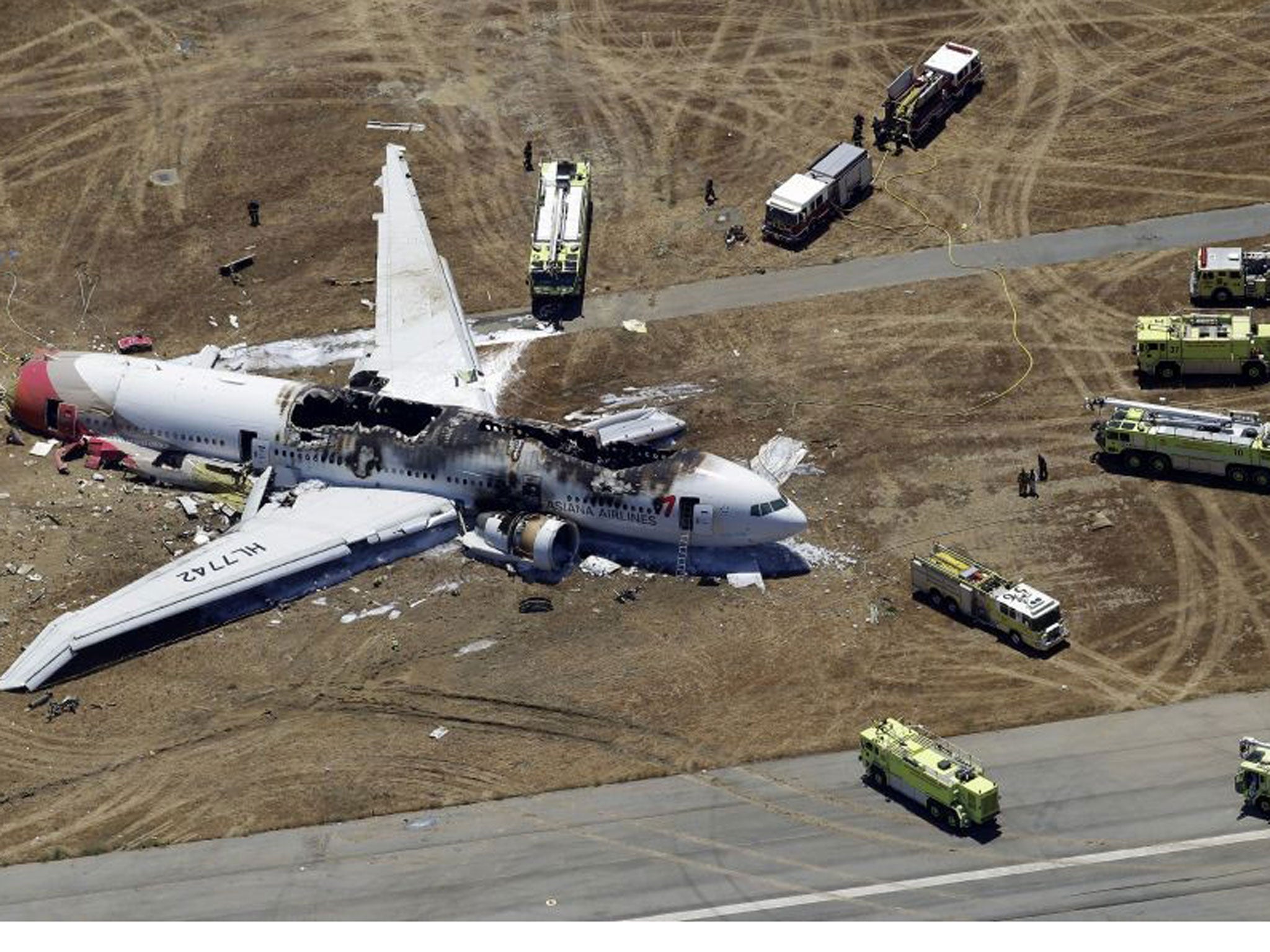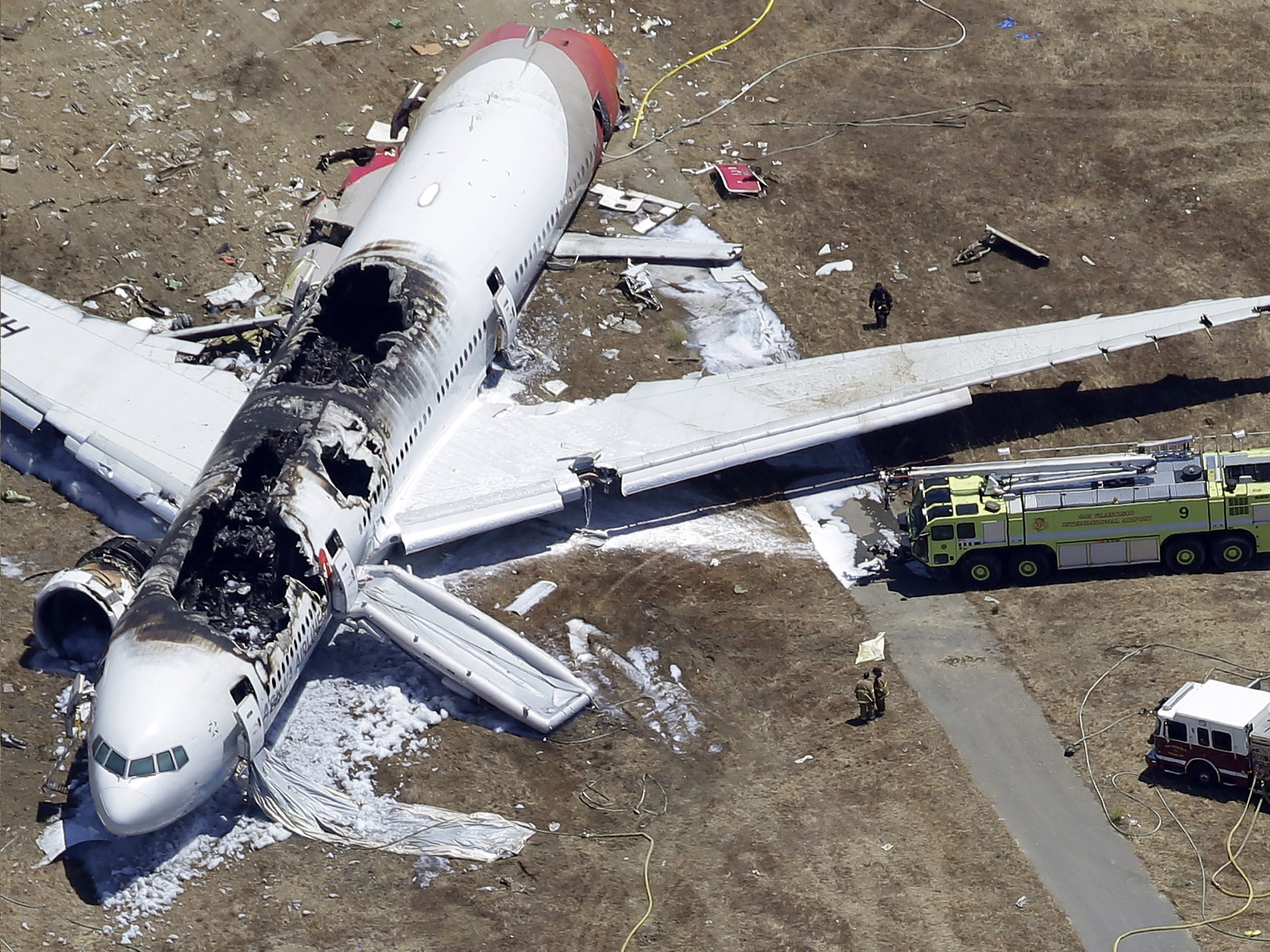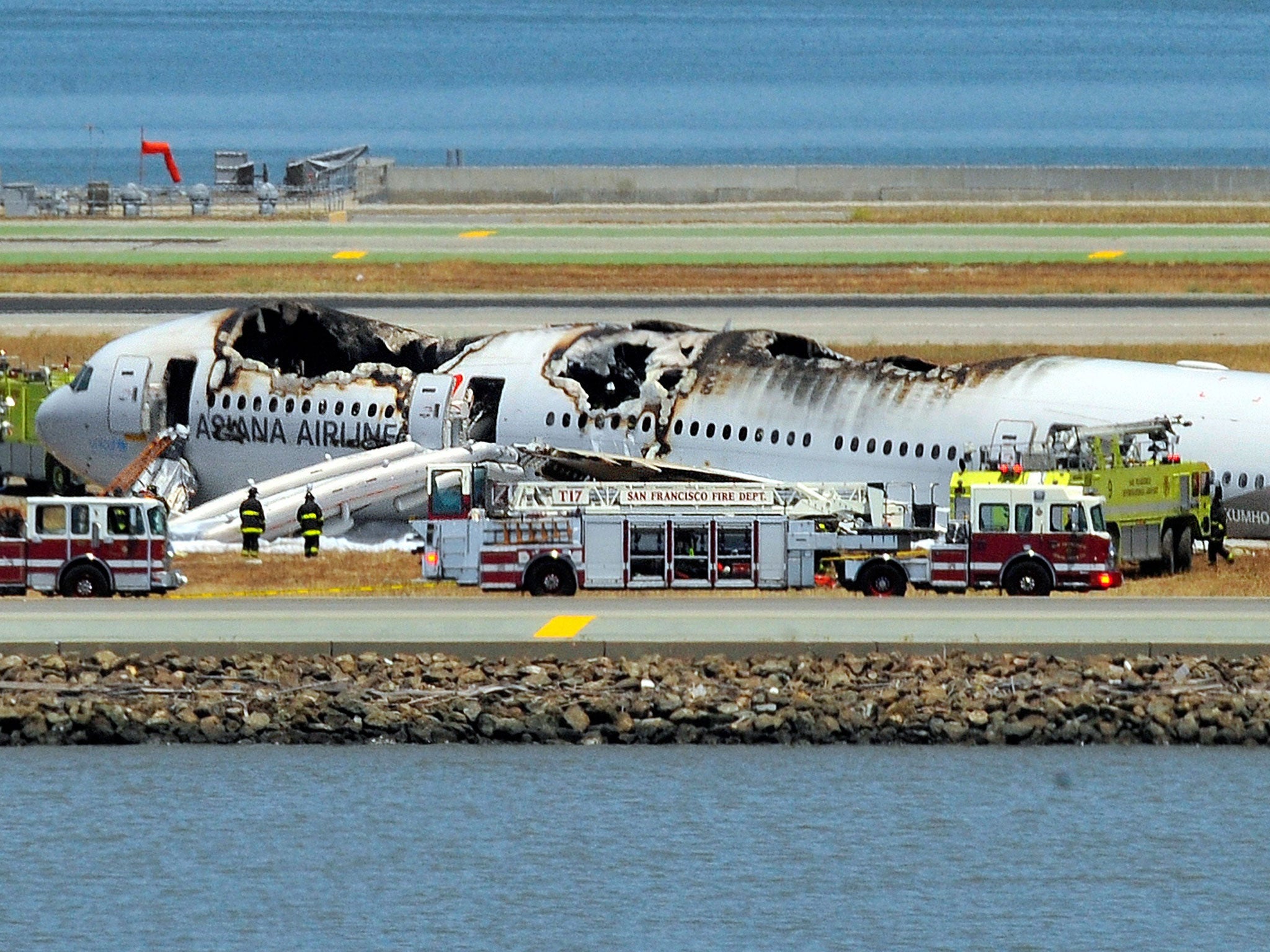Asiana Airlines flight 214 crash caused by Boeing planes being 'overly complicated'
Safety board calls for Boeing to 'develop and evaluate' the way its fleet's control systems are automated

The probe into the fatal crash of Asiana Airlines flight 214 on its landing in San Francisco last year has concluded that the Boeing 777’s overly complex control systems were partially to blame.
US investigators called on the manufacturer to make changes to the increasingly complicated automated controls which, they claimed, pilots no longer “fully understand”.
The inquiry into the crash, which killed three Chinese teenagers and injured nearly 200 people, was concluded yesterday by the US National Transportation Safety Board.
But the board was far from exonerating the Asiana pilots over their involvement in the accident.
Acting chairman Chris Hart said that, between them, the three veteran pilots were found to have committed between 20 and 30 errors in their final approach to San Francisco International – varying from minor to highly significant.
Perhaps the most serious came from the 45-year-old captain Lee Kang Kuk, who was new to the 777. Kuk inadvertently prevented the plane’s “autothrottle” system from maintaining speed on approach for landing.
Video: Footage of the 2013 crash
As a result, the plane was too low and going too slowly as it neared the landing strip. Its tail struck the seawall and ripped off, sending the rest of the jet skidding down the runway.
Hart said the accident underscores a problem that has long troubled aviation regulators around the world – that complicated automated aircraft controls, designed to improve safety, are creating new opportunities for human error.
The Asiana flight crew “over-relied on automated systems that they did not fully understand,” Hart said.

“In their efforts to compensate for the unreliability of human performance, the designers of automated control systems have unwittingly created opportunities for new error types that can be even more serious than those they were seeking to avoid,” he said.
The South Korea-based airline's pilot training was also faulted.
The board didn't say that the autothrottle failed to perform as designed. But rather that its design, under certain circumstances, could lead to confusion as to whether it was controlling speed or in an inactive state.
The NTSB released documents in which Asiana conceded that the probable cause of the accident was the crew's failure to check the plane's airspeed and abort landing accordingly.

Boeing has released a statement in which it rejected the notion that the 777's automated systems contributed to the accident, pointing to the fact that in its 18-year history the aircraft has made more than 55 million safe landings.
“The auto-flight system has been used successfully for over 200 million flight hours across several airplane models,” the company said. “The evidence collected during this investigation demonstrates that all of the airplane's systems performed as designed.”
Ilyas Akbari, a Los Angeles attorney representing 16 of Flight 214's passengers, said the NTSB had done “the right thing”.
Akbari said: “It took courage to call out Boeing because it's an American manufacturer“ and one of the nation's largest employers and exporters,” adding that most of the fault nonetheless lies with Asiana and its pilots.

The nature of captain Kuk’s mistake is in itself complicated. He set the throttle to idle after the plane climbed unexpectedly high a little before the landing, and expected it to then continue automatically controlling speed. In most circumstances it would have done – but because Kuk had turned off the autopilot at the exact same time, the autothrottle remained on hold at the last selected speed – idle.
A training captain who was sitting next to Kuk in the right seat didn't notice the error, and then compounded it by turning off only one of two other key systems for managing the flight. The systems are designed to be both on or off at the same time – never just one or the other.
A third pilot riding in the jump seat noticed the plane was descending too fast – but didn't say anything right away. The pilots also failed to immediately start aborting the landing when they realized something had gone wrong. It all meant that by the time they did call for a “go-around” it was too late.
The crash on 6 July 2013 was the first fatal accident in the history of the Boeing 777, and remains the only fatal passenger airline crash in the US in the past five years.
Join our commenting forum
Join thought-provoking conversations, follow other Independent readers and see their replies
Comments